This Post May Contain Affiliate Links. Please Read Our Disclosure Policy.
This easy Kung Pao Beef is a simple, homemade version of a classic take-out dish. The juicy flank steak is cooked in a rich and savory sauce with crisp bell peppers and crunchy roasted peanuts for an incredible blend of flavors. Serve this delicious meat and veggie stir fry on its own or with a side of rice or noodles for a total meal.
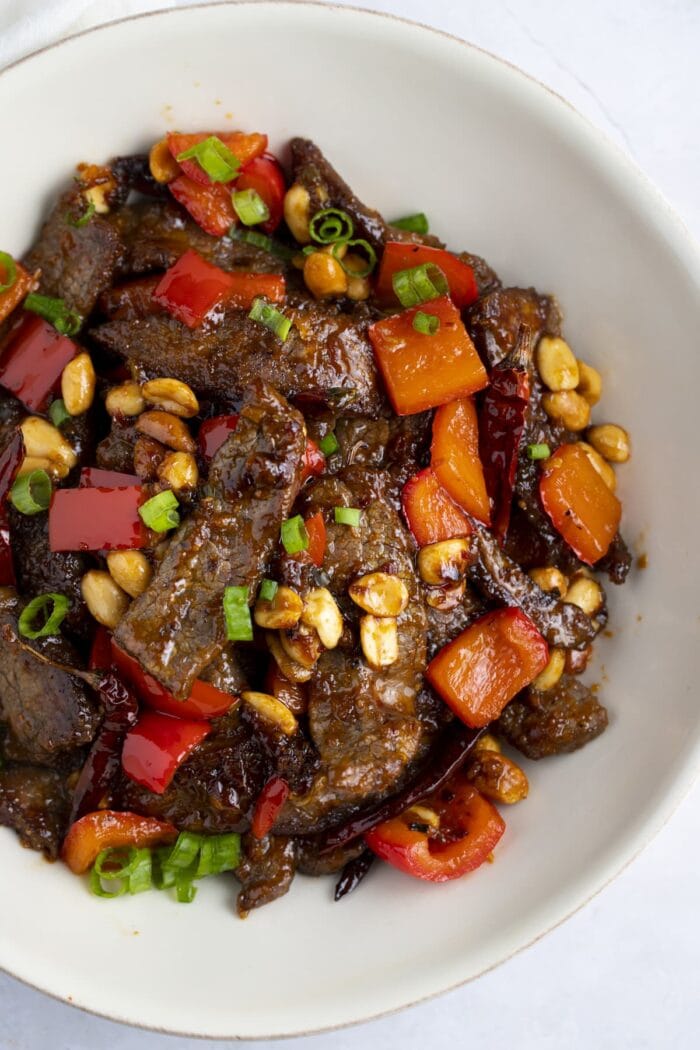
What Makes This Recipe So Good
- It’s full of incredible, intense flavors! There’s a little heat from the dried red Thai chiles, but it’s balanced beautifully by the sweet and savory sauce, the juicy steak, and the mild bell peppers.
- Kung pao beef is super easy to make, and super easy to make your own! One of my favorite things about recreating my favorite restaurant meals at home is that I can control what goes into them and how much of each ingredient I use, so I know it’ll taste just the way I like it. This recipe may not use all the same ingredients as an authentic kung pao beef, but it’s a convincing, easy-to-make, at-home version that’s absolutely delicious.
- You can enjoy this beef dish on its own or with simple sides, like fried rice, white rice, or noodles. If you’re watching your carbs, use palmini pasta or cauliflower fried rice.
- Make this kung pao beef ahead of time for your weekly meal prep! Leftovers will keep for 5 days as long as you refrigerate them in an airtight container. Reheat it in a large skillet over low heat until warmed through.
Key Ingredients
Flank Steak – We love flank steak recipes around here! The trick to really, really incredible steak in your kung pao beef is cornstarch. Yup! The strips of steak are lightly coated in cornstarch, both to tenderize the meat and to protect it from the heat of the skillet. This step helps the steak stay really tender and juicy, so don’t skip it!
Chinese Black Vinegar – This inky black vinegar is a little sweet and a little smokey. You may be able to find it in your grocery store or international market, or you can order it online. Just be sure to look for unsweetened Chinese black vinegar – it might be labelled Chinkiang vinegar or Zhenjiang vinegar. If you can’t find Chinese black vinegar, you can substitute an equal amount of rice wine vinegar or even plain white vinegar, though the flavors won’t be quite the same.
Dried Red Thai Chiles – If you’re very heat sensitive, cook with the red Thai chiles, but don’t actually eat them. Just remove them from the kung pao beef mixture right before you serve it. That way you get their flavor without the intensity of eating the actual pepper. You can also cut the number of chiles you use from 6 down to 3 or 4.
Chef’s Tips
- Using a very sharp knife, cut your steak against the grain (meaning perpendicular to the muscle fibers running through the meat) to prevent it from being tough and chewy. Cutting the steak while it’s cold may make it easier to cut.
- You can use other veggies in your stir fry if you want! Snap peas, broccoli, onion, or even asparagus would go well in kung pao beef.
- Not a big steak fan? You could also use chicken, for an easy at-home kung pao chicken.
- The actual cooking process goes pretty quickly, so don’t wander away from the stove! I like to make sure I start my sides ahead of time so I’m not waiting on anything once the kung pao beef is ready.
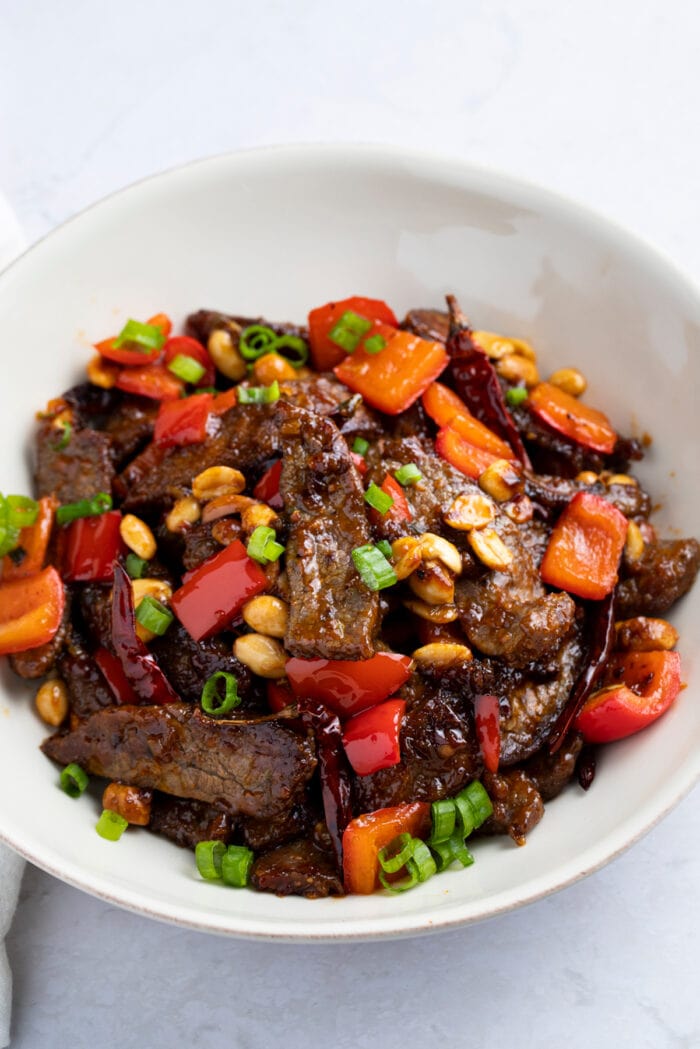
Other Asian-Inspired Recipes You’ll Love
- Miso Salmon
- Beef Negimaki
- Chicken Chop Suey
- Asian Salad Dressing
- Keto Ramen
- Slow Cooker Tom Kha Soup (Thai Coconut Chicken Soup)
- Beef Chow Mein
- Japanese Curry in the Instant Pot
- Hunan Beef
- Beef Lo Mein
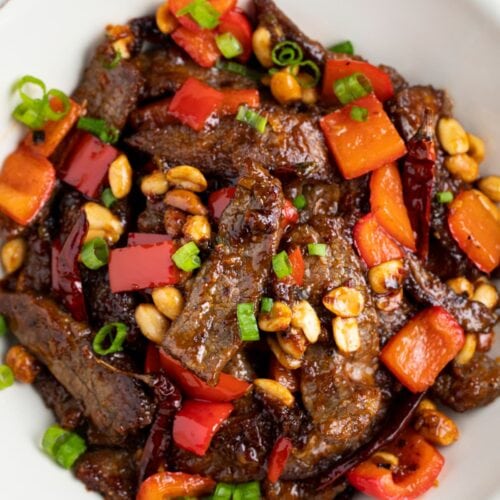
Kung Pao Beef
Equipment
- Large bowl
- Medium bowl
- Large skillet
Ingredients
- 1 pound flank steak thinly sliced
- 3 tablespoons cornstarch
- salt and pepper to taste
For the Sauce
- 3 tablespoons soy sauce
- 2 tablespoons chili sauce
- 1 tablespoon granulated sugar
- 2 tablespoons Chinese black vinegar
- 1 tablespoon rice wine vinegar
- 1 teaspoon cornstarch
For the Stir Fry
- 3 tablespoons neutral cooking oil
- 6 dried red Thai chiles
- ½ teaspoon Sichuan peppercorns
- 4 scallions white and green parts divided, chopped
- 3 cloves garlic minced
- 1 1-inch piece fresh ginger grated
- 1 bell pepper core and seeds removed, chopped
- ½ cup roasted peanuts
Instructions
- Place beef in large bowl and add cornstarch, salt, and pepper. Toss or stir to coat beef completely.
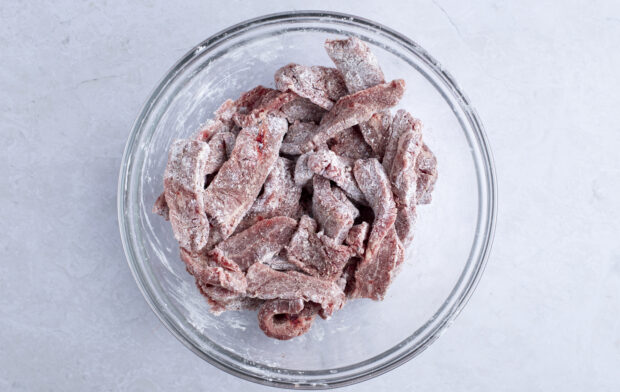
- In separate bowl, mix together all sauce ingredients. Set aside.
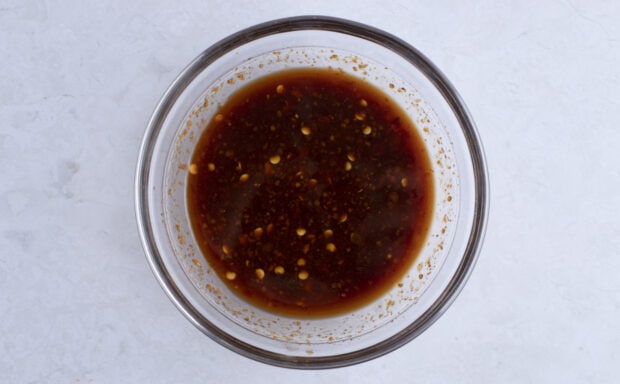
- In large skillet over medium-high heat, cook beef 2 to 3 minutes, stirring occasionally until brown.
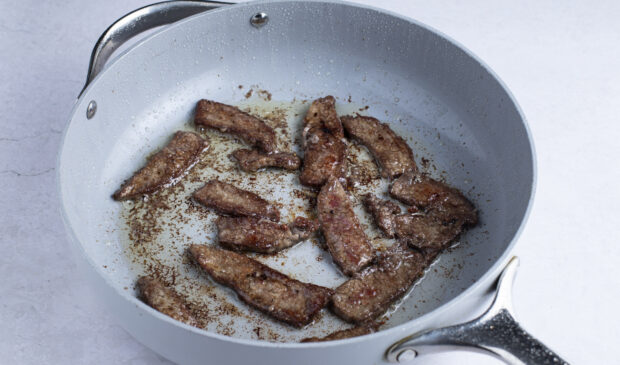
- Transfer beef to plate or bowl and set aside. Add cooking oil to skillet and heat. When hot, add Thai chilis and Sichuan peppercorns. Cook approximately 1 minute.
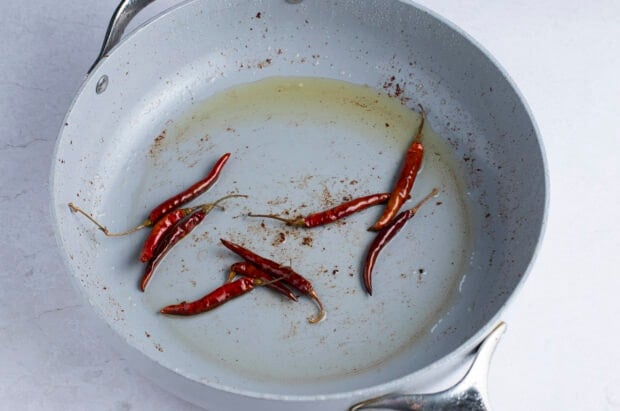
- Add white parts of scallions, garlic, and ginger to skillet. Cook until fragrant, approximately 1 to 2 minutes.
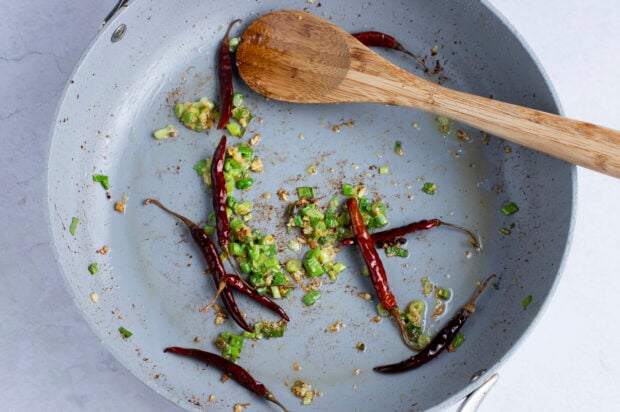
- Add chopped bell pepper and peanuts to skillet and cook 1 additional minute.
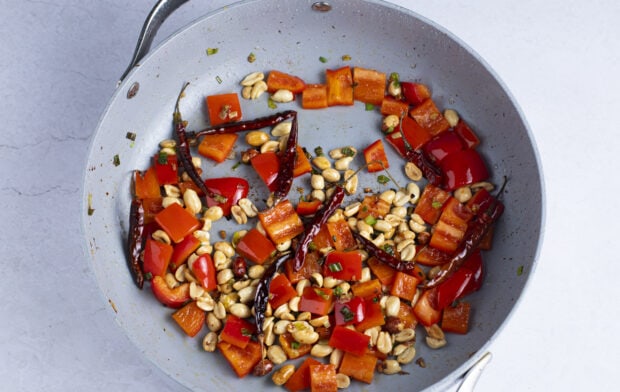
- Return beef to skillet, then pour in sauce mixture. Cook until sauce thickens. Garnish with green parts of scallions and serve.
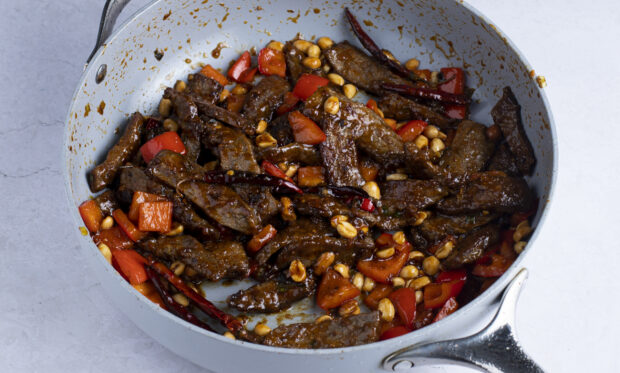
- Soy Sauce: Use low sodium soy sauce if you’re watching your sodium intake.
- Chinese Black Vinegar: Make sure to use Chinese black vinegar, and don’t use a sweetened version. If you can’t find it, you can use an equal amount of rice wine vinegar or plain white vinegar, but the flavor will be slightly different. Balsamic vinegar would also work in a pinch, as long as it’s not syrupy and sweet.
- Dried Red Thai Chiles: If you’re sensitive to heat, cut the number of chiles from 6 down to 3 or 4. You can also cook with the chiles, then take them out before serving so you don’t actually eat them, which will give you their flavor without as much of their intensity.
- To Serve: Enjoy kung pao beef on its own or with a side of white rice, cauliflower fried rice, or noodles.
- Make it Added-Sugar Free: Use granular Swerve in place of the granulated sugar in the sauce.
Approximate Information for One Serving
Nutrition Disclaimers
Number of total servings shown is approximate. Actual number of servings will depend on your preferred portion sizes.
Nutritional values shown are general guidelines and reflect information for 1 serving using the ingredients listed, not including any optional ingredients. Actual macros may vary slightly depending on specific brands and types of ingredients used.
To determine the weight of one serving, prepare the recipe as instructed. Weigh the finished recipe, then divide the weight of the finished recipe (not including the weight of the container the food is in) by the desired number of servings. Result will be the weight of one serving.
Did You Make This Recipe?
Tag @40aprons on Instagram and be sure to leave a review on the blog post!
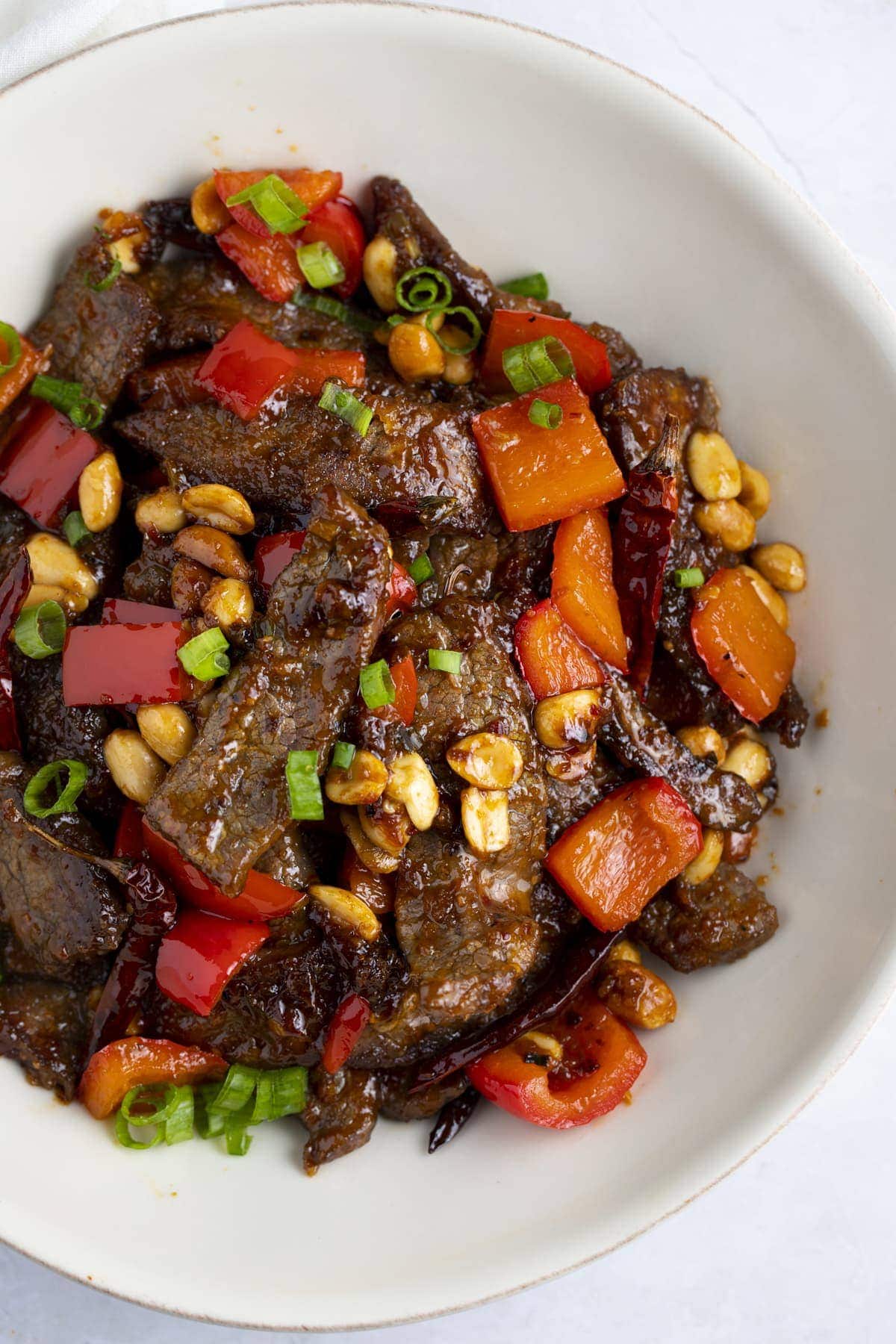
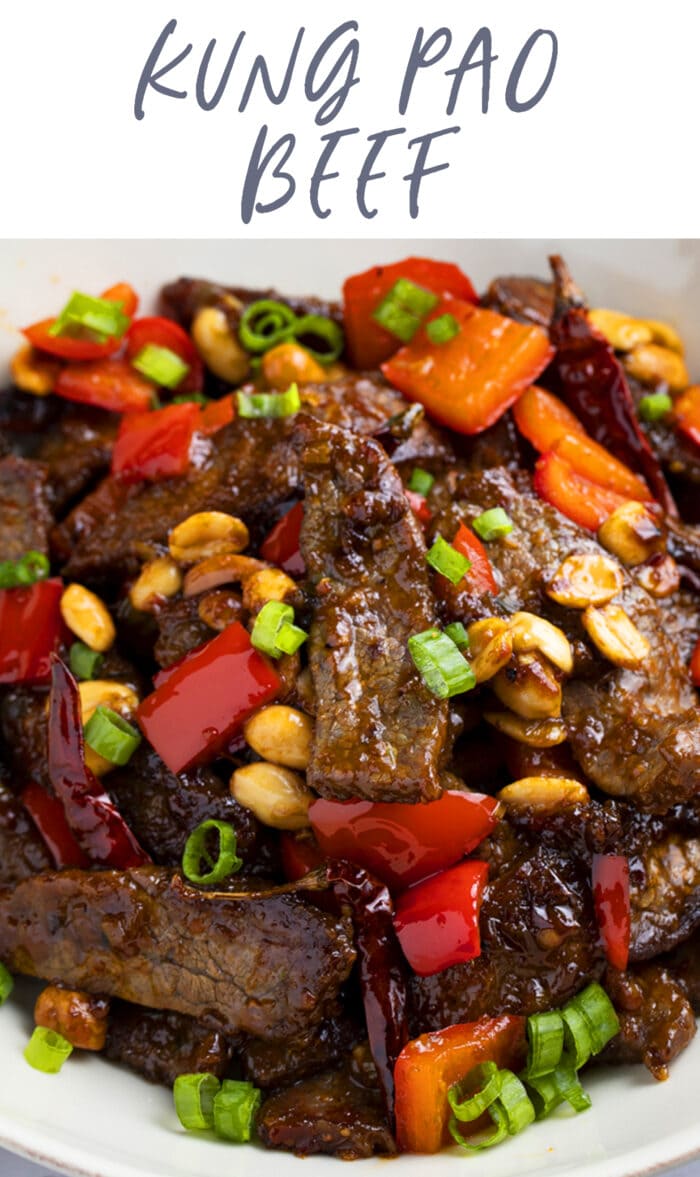

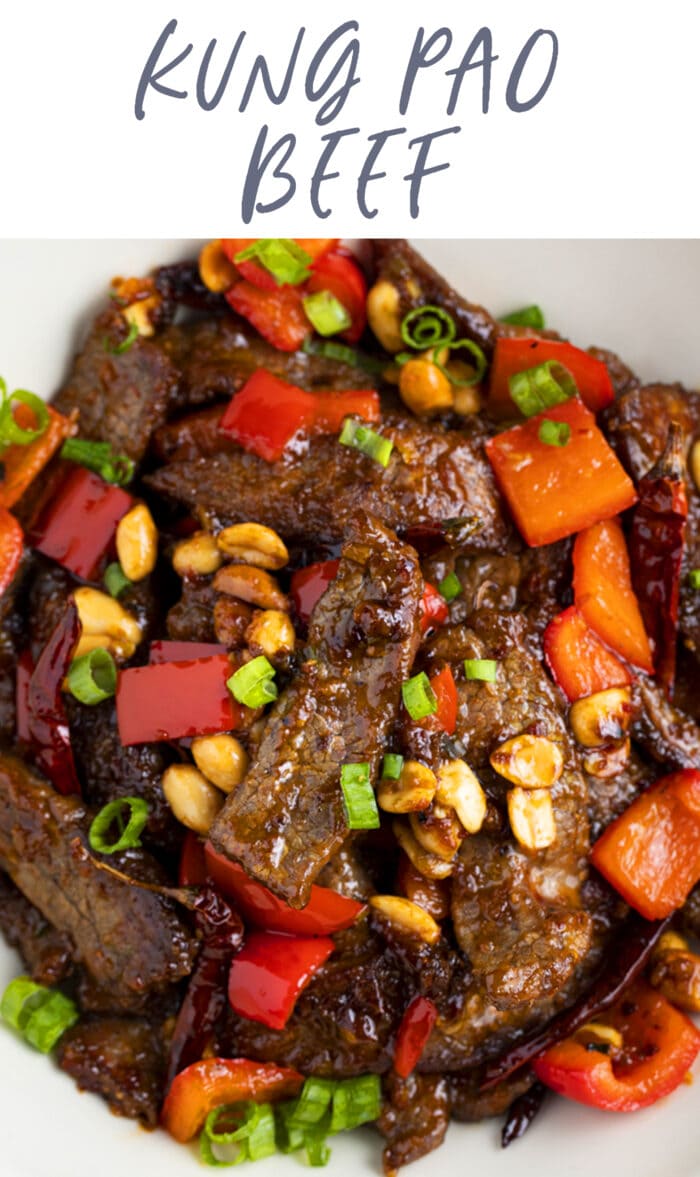
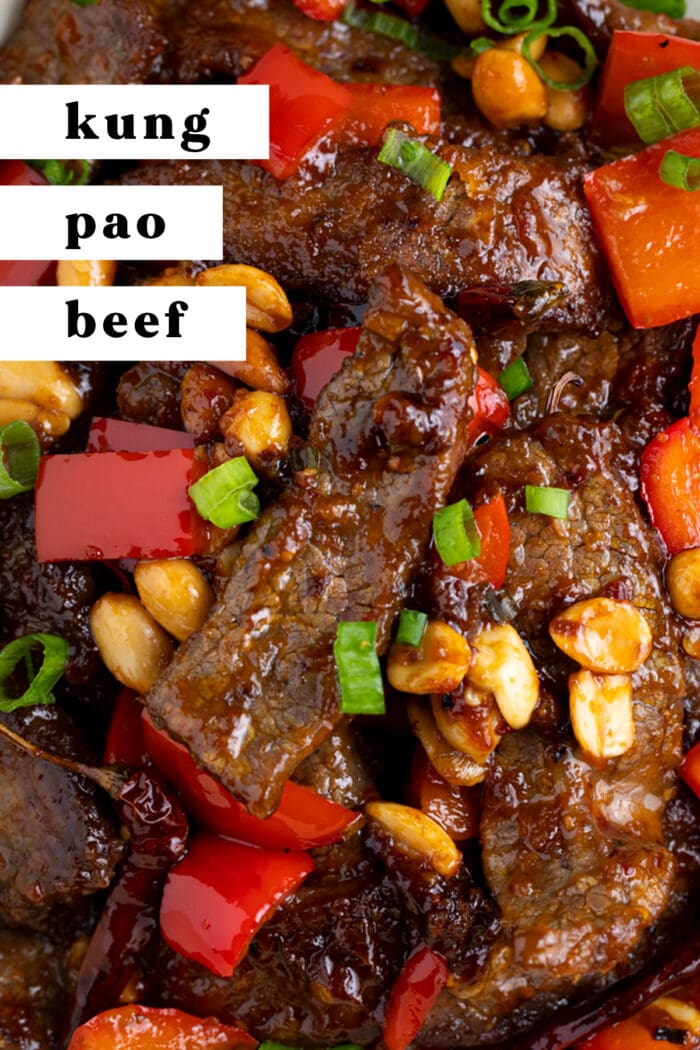
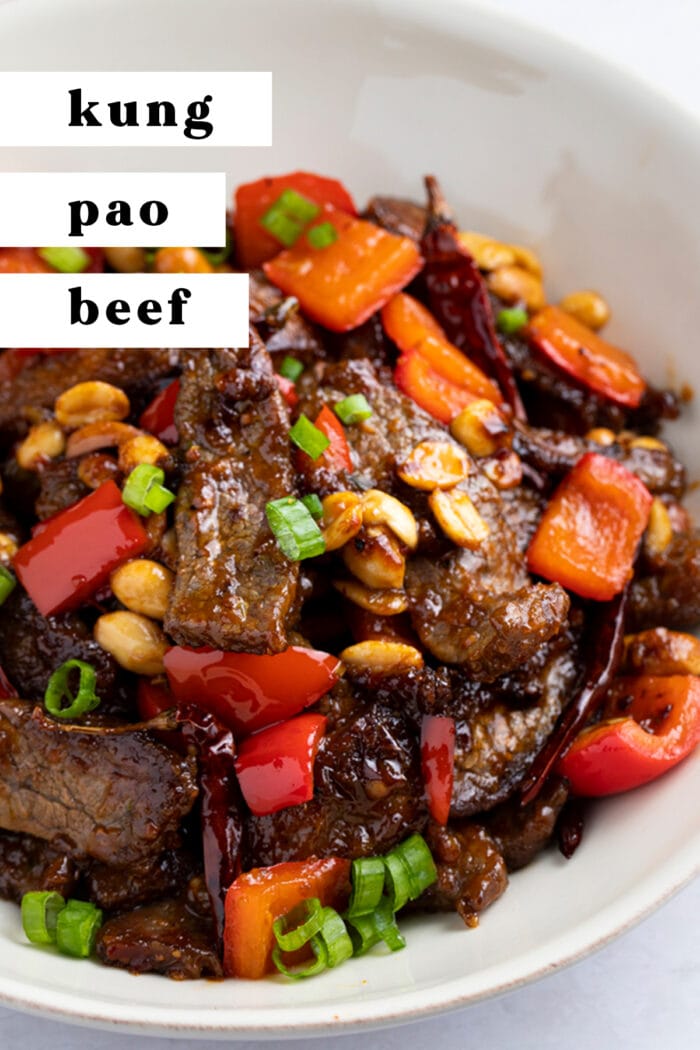
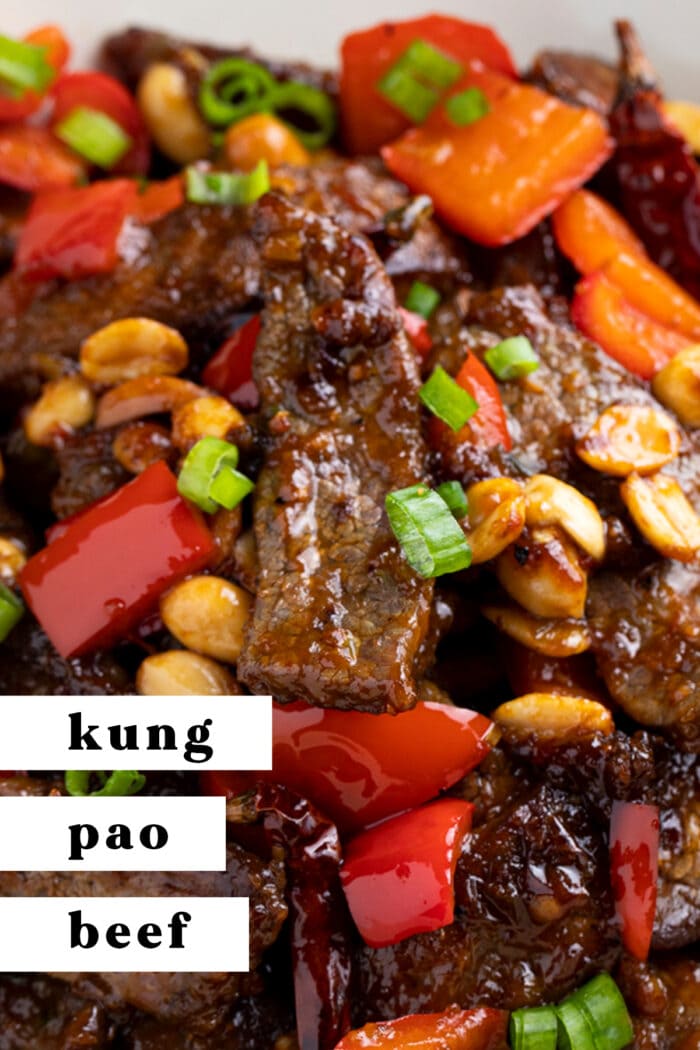
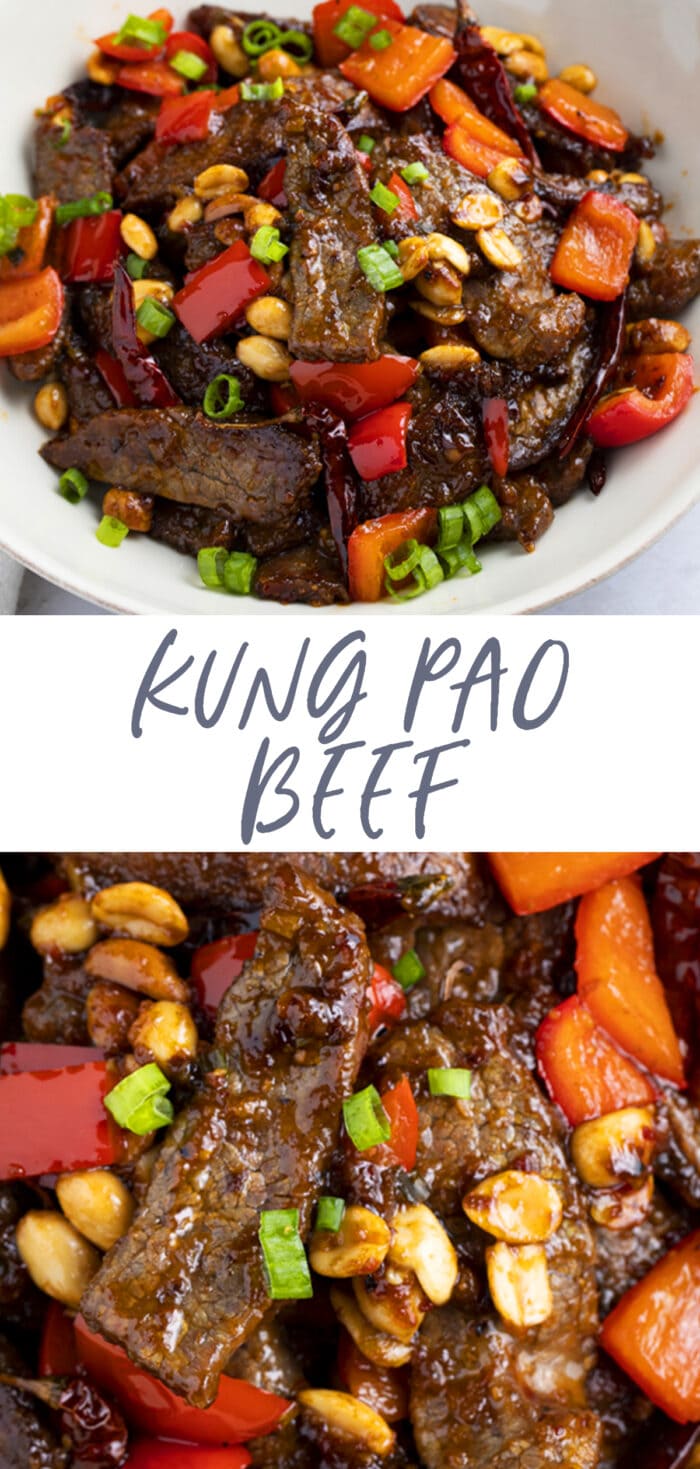
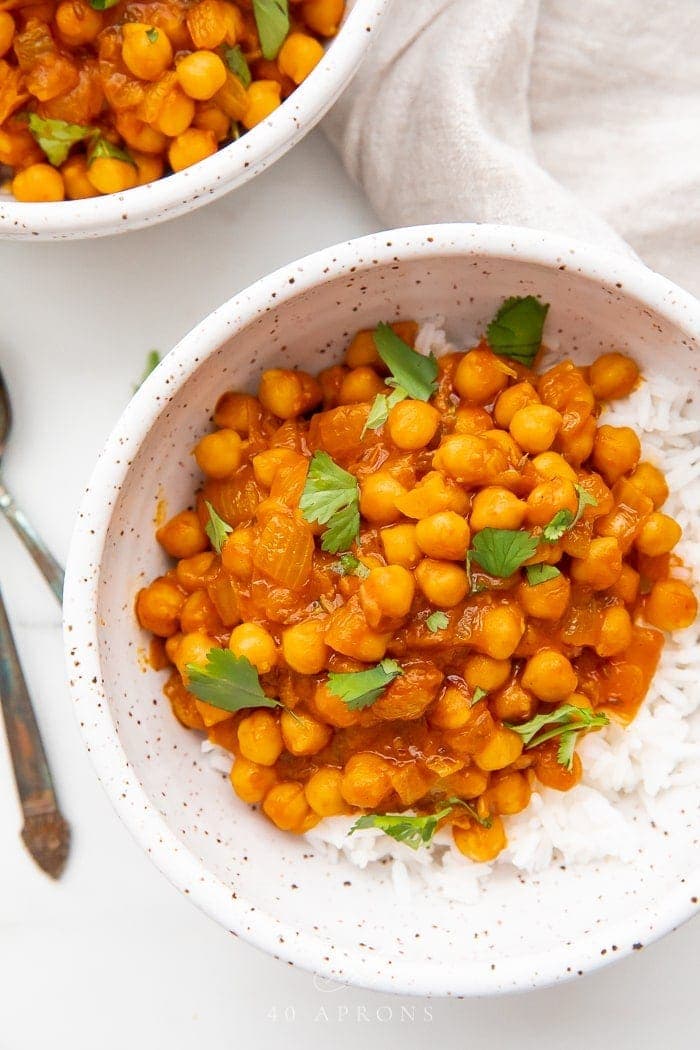
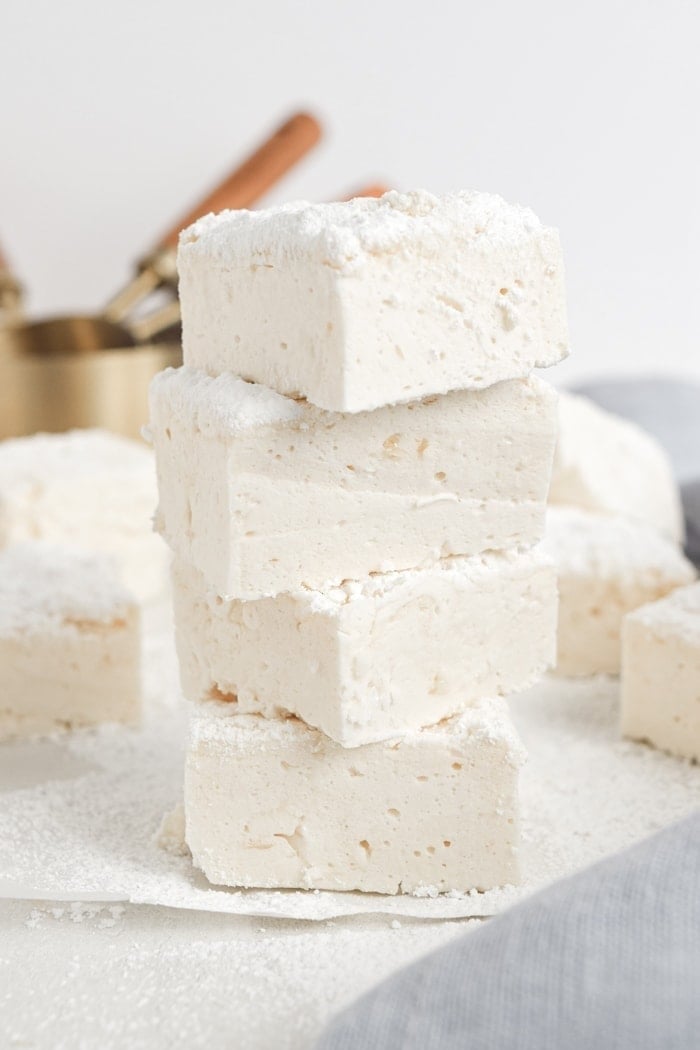
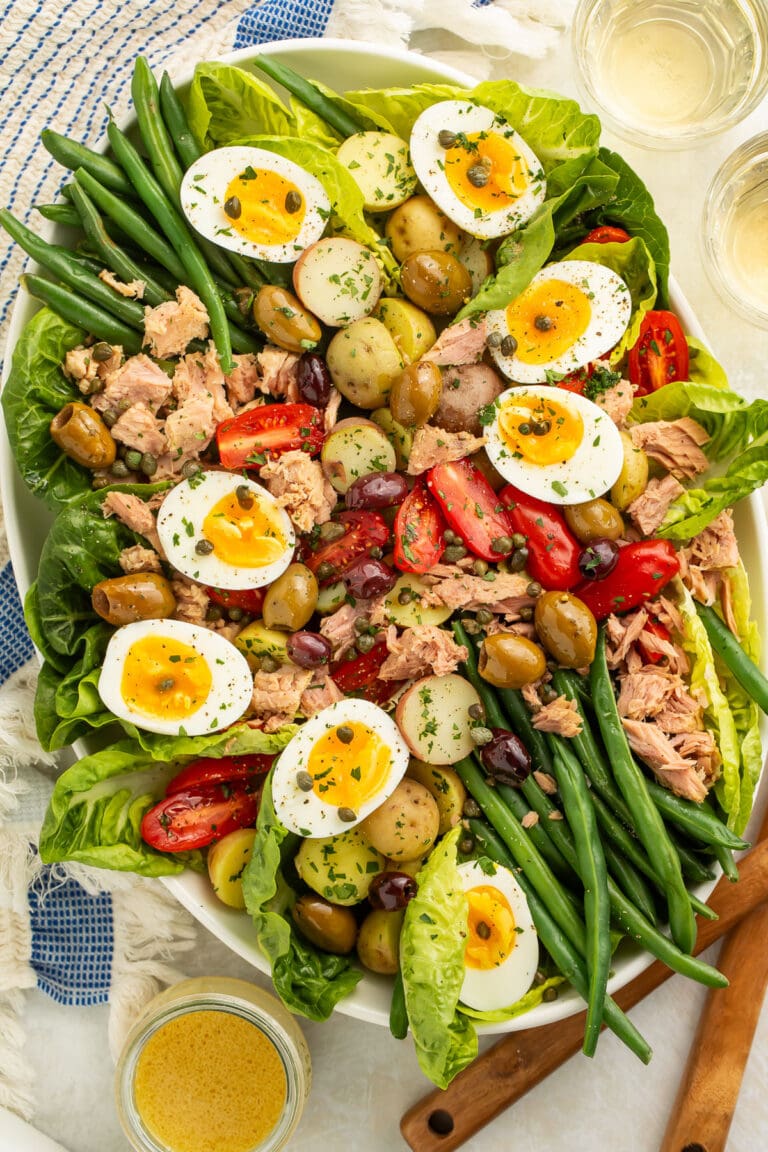
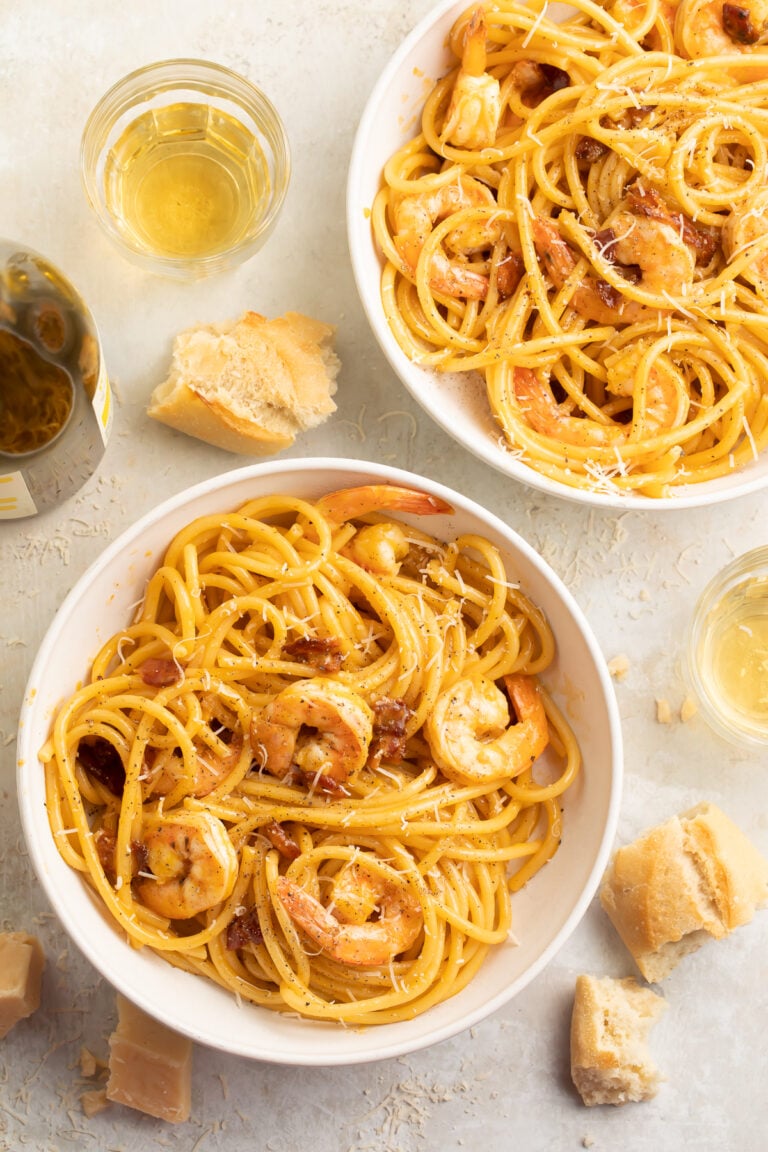
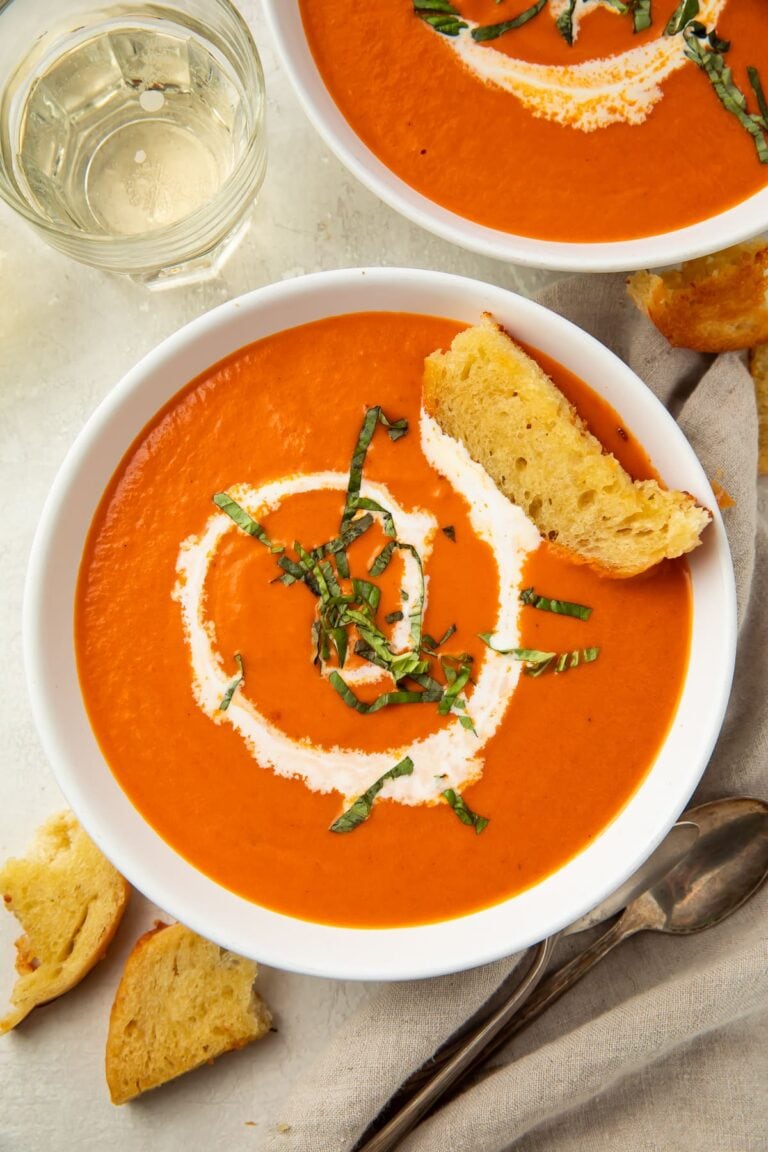
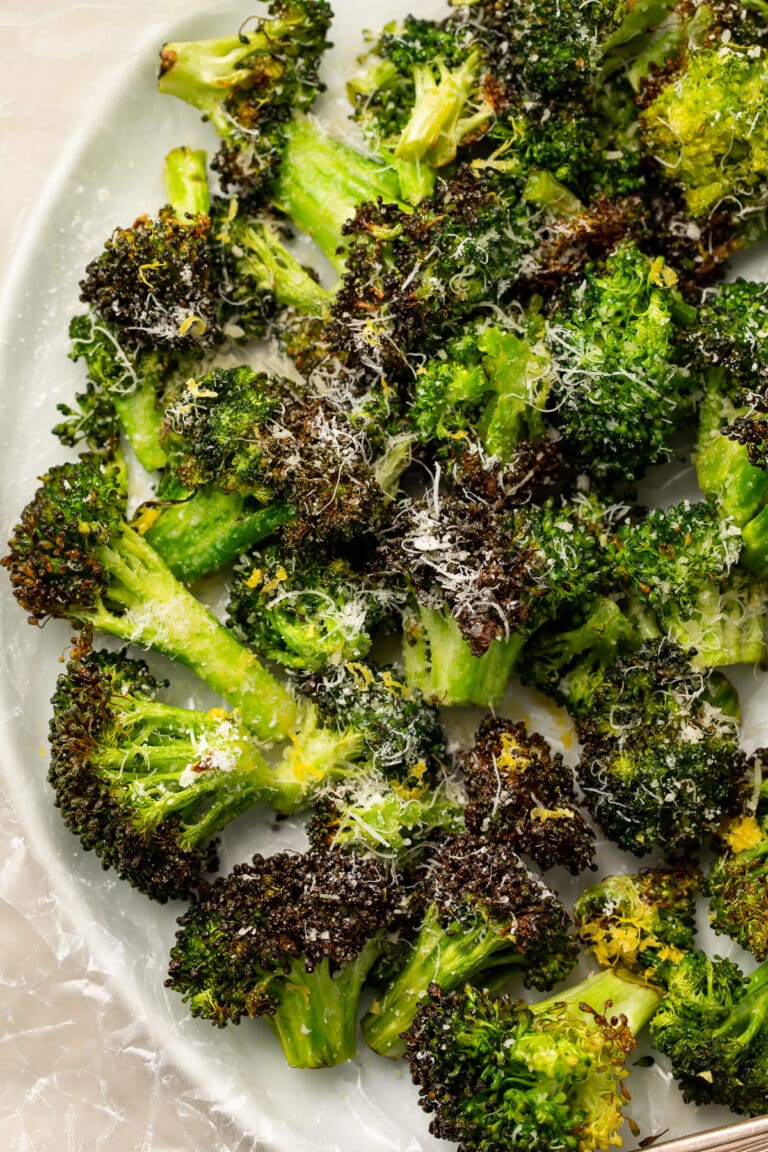










Never Miss A Meal!
New Recipes Straight To Your Inbox
A curated selection of our most recent recipes, delivered straight to your inbox once a week.
Thank you!
You have successfully joined our subscriber list.